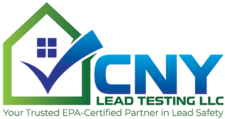Real Estate Closing Risk Inspection
Closing on a house is a momentous occasion, marking the culmination of an extensive process that involves numerous inspections and evaluations. Among the critical considerations often overlooked, one that stands out for its potential impact on health and safety is the necessity for a lead paint risk assessment. This assessment is not merely an extra step in the closing process; it is a vital precautionary measure that can have far-reaching implications for the well-being of the home’s occupants, particularly if the property was constructed before 1978.
One of the primary reasons to prioritize a lead paint risk assessment during a home closing is the potential health risks associated with lead exposure. Homes built before the implementation of the Lead-Based Paint Renovation, Repair, and Painting (RRP) Rule in 1978 may harbor lead-based paint, a material that poses serious health risks, especially to children. Lead poisoning, even in small amounts, can lead to developmental delays, behavioral issues, and a range of adverse health effects. A lead paint risk assessment is a preemptive measure to identify and address potential hazards, ensuring the safety of those who will inhabit the home.
Beyond health considerations, a lead paint risk assessment is crucial for legal and financial reasons. Non-disclosure of lead-based paint in a real estate transaction can have legal ramifications for the seller. The Residential Lead-Based Paint Hazard Reduction Act mandates that sellers must provide buyers with information about known lead-based paint hazards and allow them a specified period for a lead inspection. Failing to comply with these regulations can result in legal consequences. As a buyer, having a lead paint risk assessment before closing protects you from potential liabilities and allows for informed decision-making.
Moreover, the financial implications of lead paint issues should not be underestimated. Addressing lead hazards after purchasing a home can incur significant costs. By conducting a lead paint risk assessment as part of the closing process, potential hazards can be identified and addressed before the transaction is finalized. This proactive approach not only protects the financial investment in the property but also ensures a safer and more secure living environment.
In the broader context of responsible home ownership, a lead paint risk assessment aligns with sustainability and ethical considerations. Understanding the environmental impact of a property, including the presence of lead-based paint, allows homeowners to make informed choices about renovations, maintenance, and potential health and safety improvements. It reflects a commitment to both the well-being of the occupants and the longevity of the property.
In conclusion, a lead paint risk assessment is not a mere formality but a critical step in the home closing process. It safeguards the health of future occupants, prevents legal complications, and mitigates potential financial burdens associated with lead hazards. As the adage goes, “knowledge is power,” and in the case of a home purchase, knowledge about lead paint risks empowers buyers to make informed decisions, fostering a secure and healthy living environment for years to come
